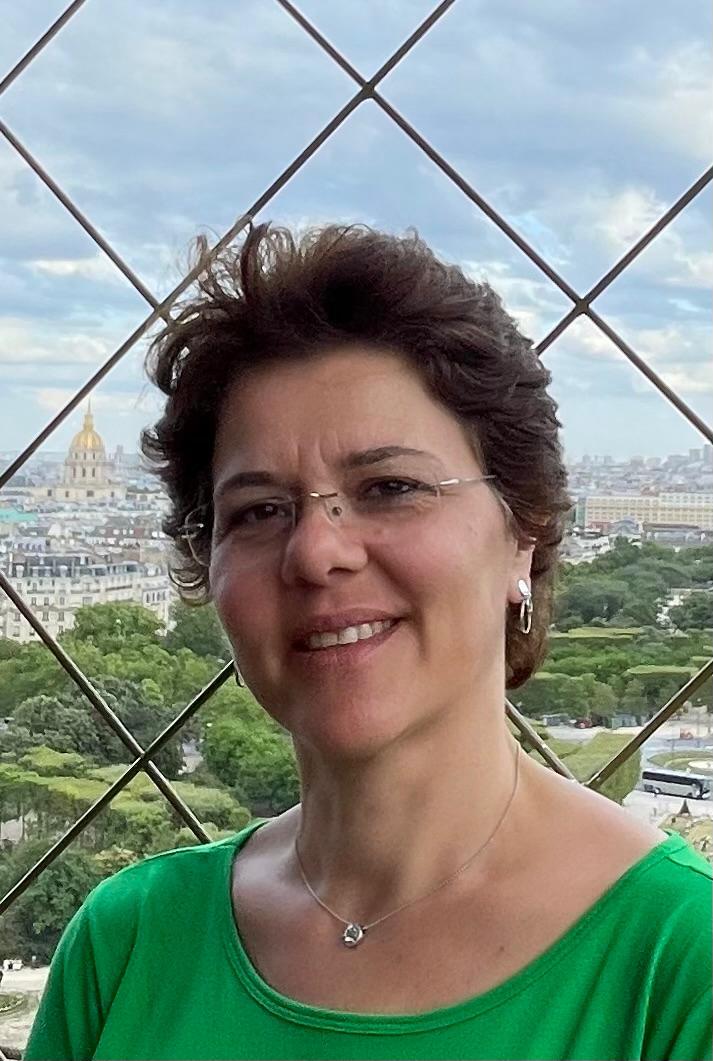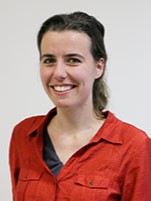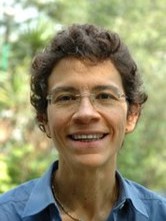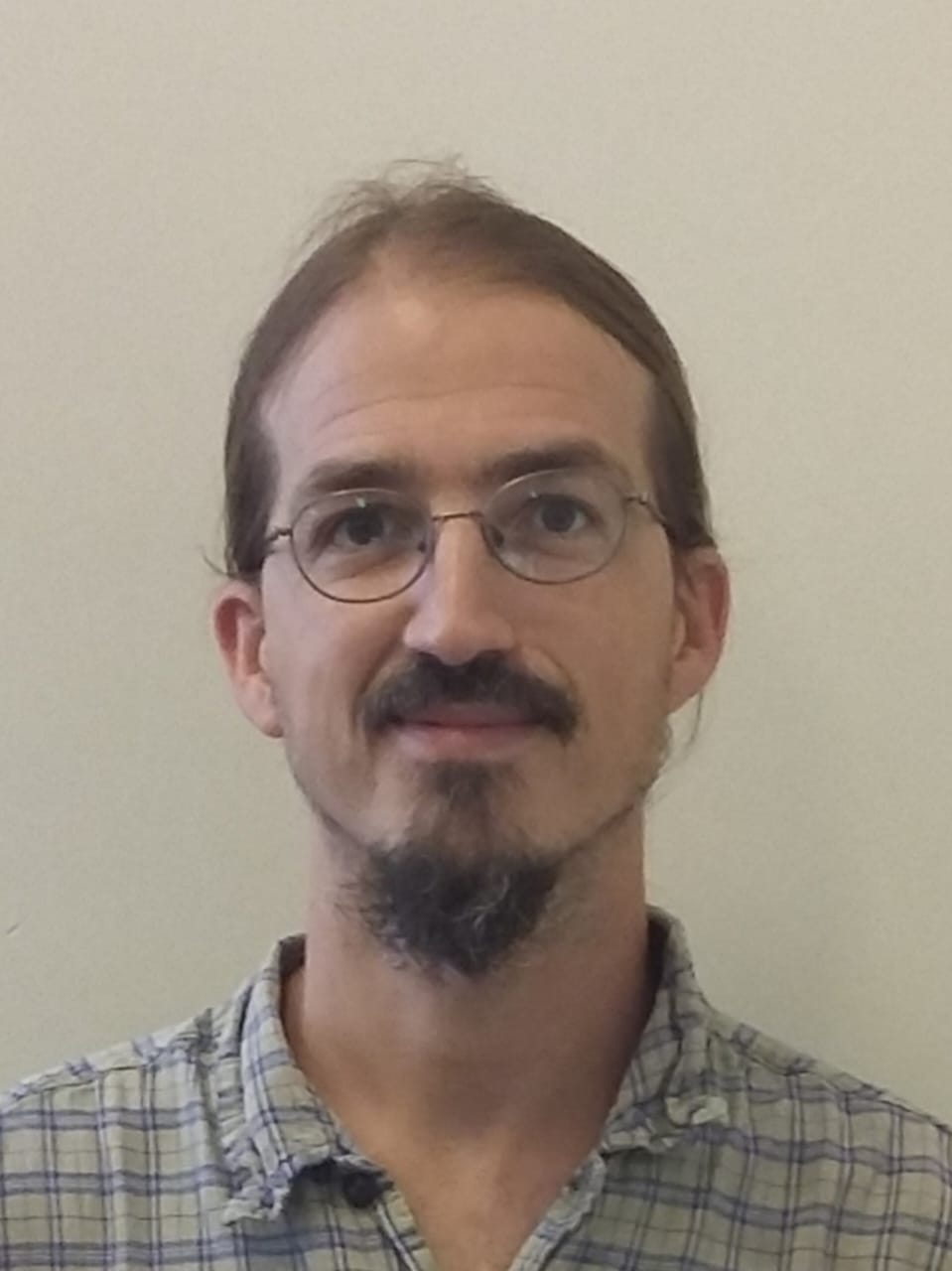Conferências

Plenarista: Felipe Linares, IMPA
Titulo: On solutions to Interaction equations for short and long dispersive waves
Resumo: In this lecture we will be concerned with properties of solutions to two nonlinear dispersive models called the Schrödinger-Korteweg-de Vries and Schrödinger-Benjamin-Ono systems.
First we will describe the decay of long-time solutions of the initial value problem (IVP) associated with the Schrödinger-Korteweg-de Vries system. We use recent techniques in order to show that solutions of this system decay to zero in the energy space. Our result is independent of the integrability of the equations involved and it does not require any size assumptions.
In the second part of the talk we will discuss the local well-posedness of the IVP associated with the Schrödinger-Benjamin-Ono system.
First we will describe the decay of long-time solutions of the initial value problem (IVP) associated with the Schrödinger-Korteweg-de Vries system. We use recent techniques in order to show that solutions of this system decay to zero in the energy space. Our result is independent of the integrability of the equations involved and it does not require any size assumptions.
In the second part of the talk we will discuss the local well-posedness of the IVP associated with the Schrödinger-Benjamin-Ono system.

Plenarista: Giancarlo Urzúa, Pontificia Universidad Católica de Chile
Titulo: On singular algebraic surfaces and the Horikawa problem
Resumo: In a series of articles in the 70s, Horikawa classified all complex nonsingular projective surfaces on (and close to) the Noether line. He described the connected components and dimensions of their moduli spaces. He also identified their topological types (in particular, they all are simply-connected), and their diffeomorphism types up to one infinite family. In that case the corresponding moduli spaces have two connected components, and the problem is to decide whether surfaces in these two distinct components are diffeomorphic. It has been open since the appearance of the first article in 1976.
One way to attack this problem is to construct common mildly degenerated surfaces to these components. This would happen in the Kollár--Shepherd-Barron--Alexeev compactification of the moduli space. Recently it was proved by Julie Rana and Sönke Rollenske (2022) that there are common degenerations for these components, but so far too singular. On the other hand, it is known that if the singularities are of Wahl type (particular quotient singularities), then the surfaces in these two components would be diffeomorphic. Surprisingly, in the literature there is only one degeneration with Wahl singularities and for one component, due to Yongnam Lee and Jongil Park (2011), which considers the smooth original construction of Fintushel--Stern (1997).
In this line of attack, the first question would be: Is it possible to classify all singular surfaces for these potential common degenerations? In a joint work with Vicente Monreal and Jaime Negrete, both Masters students at UC Chile, we are able to classify every singular surface with Wahl singularities of Horikawa type. In particular, this gives all possible candidates for these potential common mild degenerations. (Still, one needs to show smoothings for them to be able to use it for the Horikawa problem.) In addition, we are able to classify all Wahl singular surfaces close to the Noether line, such as quintics (in projective space) and I-surfaces. In this talk, I will review this famous Horikawa problem, the strategy via degenerations, and I will show the ideas for the classification of Horikawa surfaces with Wahl singularities.
Titulo: On singular algebraic surfaces and the Horikawa problem
Resumo: In a series of articles in the 70s, Horikawa classified all complex nonsingular projective surfaces on (and close to) the Noether line. He described the connected components and dimensions of their moduli spaces. He also identified their topological types (in particular, they all are simply-connected), and their diffeomorphism types up to one infinite family. In that case the corresponding moduli spaces have two connected components, and the problem is to decide whether surfaces in these two distinct components are diffeomorphic. It has been open since the appearance of the first article in 1976.
One way to attack this problem is to construct common mildly degenerated surfaces to these components. This would happen in the Kollár--Shepherd-Barron--Alexeev compactification of the moduli space. Recently it was proved by Julie Rana and Sönke Rollenske (2022) that there are common degenerations for these components, but so far too singular. On the other hand, it is known that if the singularities are of Wahl type (particular quotient singularities), then the surfaces in these two components would be diffeomorphic. Surprisingly, in the literature there is only one degeneration with Wahl singularities and for one component, due to Yongnam Lee and Jongil Park (2011), which considers the smooth original construction of Fintushel--Stern (1997).
In this line of attack, the first question would be: Is it possible to classify all singular surfaces for these potential common degenerations? In a joint work with Vicente Monreal and Jaime Negrete, both Masters students at UC Chile, we are able to classify every singular surface with Wahl singularities of Horikawa type. In particular, this gives all possible candidates for these potential common mild degenerations. (Still, one needs to show smoothings for them to be able to use it for the Horikawa problem.) In addition, we are able to classify all Wahl singular surfaces close to the Noether line, such as quintics (in projective space) and I-surfaces. In this talk, I will review this famous Horikawa problem, the strategy via degenerations, and I will show the ideas for the classification of Horikawa surfaces with Wahl singularities.

Plenarista: Regilene Oliveira, ICMC-USP
Titulo: Topological equivalence at infinity of a planar vector field and its principal part defined through Newton Polytope
Resumo: There is extensive literature concerning the use of Newton polytope in the study of planar vector fields. There conditions that assure the existence of a topological equivalence between an analytic planar vector field and its principal part near an isolated singularity, there is a similar result for the 3-dimension case. The Newton polytope was also used in the topological determination of singularities of positive quadratic differential forms (or pairs of foliations) and constrained differential systems. From a practical point of view, these results say how to identify the monomials of the vector fields that determine the topological behavior near the singularity.
With respect to the dynamics near the infinity, the asymptotic behavior of integral curves of vector fields near singular points and near the infinity was studied as conditions on the Newton polytope that guarantees the existence of one-parameter family of fractional power series solutions, as well as problems concerning Newton polytope and integrability of differential equations.
Although the use of Newton polytope in the study of planar vector fields is well understood in the literature, to the best of our knowledge, there was no explicit result concerning topological determination of the dynamics in a neighbourhood of the boundary of the "infinity". In this talk we discuss how to associate a Newton polytope P to a given planar polynomial vector field X and prove (under some non degeneracy conditions) that the monomials associated to the upper boundary of P determine (under topological equivalence) the phase portrait of X in a neighbourhood of boundary of the Poincaré--Lyapunov disk. This result can be seen as a version of the well known result of Berezovskaya, Brunella and Miari for the dynamics at the infinity or a generalization of the Hartman-Grobman Theorem at infinity. To make this lecture accessible to the broadest audience at this event, figures and definitions will be presented, aiming to convey the basic geometry and fundamental ideas of this investigation.
Titulo: Topological equivalence at infinity of a planar vector field and its principal part defined through Newton Polytope
Resumo: There is extensive literature concerning the use of Newton polytope in the study of planar vector fields. There conditions that assure the existence of a topological equivalence between an analytic planar vector field and its principal part near an isolated singularity, there is a similar result for the 3-dimension case. The Newton polytope was also used in the topological determination of singularities of positive quadratic differential forms (or pairs of foliations) and constrained differential systems. From a practical point of view, these results say how to identify the monomials of the vector fields that determine the topological behavior near the singularity.
With respect to the dynamics near the infinity, the asymptotic behavior of integral curves of vector fields near singular points and near the infinity was studied as conditions on the Newton polytope that guarantees the existence of one-parameter family of fractional power series solutions, as well as problems concerning Newton polytope and integrability of differential equations.
Although the use of Newton polytope in the study of planar vector fields is well understood in the literature, to the best of our knowledge, there was no explicit result concerning topological determination of the dynamics in a neighbourhood of the boundary of the "infinity". In this talk we discuss how to associate a Newton polytope P to a given planar polynomial vector field X and prove (under some non degeneracy conditions) that the monomials associated to the upper boundary of P determine (under topological equivalence) the phase portrait of X in a neighbourhood of boundary of the Poincaré--Lyapunov disk. This result can be seen as a version of the well known result of Berezovskaya, Brunella and Miari for the dynamics at the infinity or a generalization of the Hartman-Grobman Theorem at infinity. To make this lecture accessible to the broadest audience at this event, figures and definitions will be presented, aiming to convey the basic geometry and fundamental ideas of this investigation.

Plenarista: Hanne Van Der Bosch, Universidad de Chile
Titulo: Bounds on the ground-state energy for Dirac Operators
Resumo: He classical Keller-Lieb-Thirring inequality bounds the ground state energy of a Schrödinger operator by a Lebesgue norm of the potential. This problem can be rewritten as a minimization problem for the Rayleigh quotient over both the eigenfunction and the potential. It is then straightforward to see that the best potential is a power of the eigenfunction, and the optimal eigenfunction satisfies a nonlinear Schrodinger equation. This talk concerns the analogous question for the smallest eigenvalue in the gap of a massive Dirac operator. This eigenvalue is not characterized by a minimization problem. By using a suitable Birman-Schwinger operator, we show that for sufficiently small potentials in Lebesgue spaces, an optimal potential and eigenfunction exists. Moreover, the corresponding eigenfunction solves a nonlinear Dirac equatioen.
Titulo: Bounds on the ground-state energy for Dirac Operators
Resumo: He classical Keller-Lieb-Thirring inequality bounds the ground state energy of a Schrödinger operator by a Lebesgue norm of the potential. This problem can be rewritten as a minimization problem for the Rayleigh quotient over both the eigenfunction and the potential. It is then straightforward to see that the best potential is a power of the eigenfunction, and the optimal eigenfunction satisfies a nonlinear Schrodinger equation. This talk concerns the analogous question for the smallest eigenvalue in the gap of a massive Dirac operator. This eigenvalue is not characterized by a minimization problem. By using a suitable Birman-Schwinger operator, we show that for sufficiently small potentials in Lebesgue spaces, an optimal potential and eigenfunction exists. Moreover, the corresponding eigenfunction solves a nonlinear Dirac equatioen.

Plenarista: Julián Fernandez Bonder, Universidad de Buenos Aires
Titulo: Eigenvalue problems for the generalized fractional laplacian
Resumo: In this lecture I will discuss some recent results on eigenvalue problems for the fractional g-Laplacian operator.
Titulo: Eigenvalue problems for the generalized fractional laplacian
Resumo: In this lecture I will discuss some recent results on eigenvalue problems for the fractional g-Laplacian operator.

Plenarista: Laura Ortiz, Universidad Nacional Autónoma de México
Titulo: Local models and analytic invariants of singular foliations by curves
Resumo: The solutions of analytic differential equations define partitions of the space by pairwise non intersecting curves. Such partitions are said to define foliations by curves (the leaves of the foliation). When a differential equation has singular points, it defines a foliation by curves with singularities. The analysis of the differential equations in neighborhoods of their isolated singular points and their analytic classification has been a recurring task since the time of Poincaré.
When the linear part of the equation at the singular point has a matrix that satisfies some generic conditions, its classification is relatively simple, however when these conditions are not met, the analytical classification has been shown to be very complicated. Namely, in the analytical classification of differential equations in neighborhoods of their degenerate singular points, a set of singular curves must be considered as well as a group that describes the behavior of the dynamics transverse to the solutions.
In the seventies of the last century, René Thom conjectured that the so-called separatrices of the equation at the singular point was the set of curves to consider. This conjecture was soon disproved and the problem (Thom’s problem) of finding the invariants of analytical classification remained widely open for a long time.
In this talk we will talk about Thom's invariants for degenerate singular points that satisfy certain genericity conditions, as well as the geometry underlying such classification.
Titulo: Local models and analytic invariants of singular foliations by curves
Resumo: The solutions of analytic differential equations define partitions of the space by pairwise non intersecting curves. Such partitions are said to define foliations by curves (the leaves of the foliation). When a differential equation has singular points, it defines a foliation by curves with singularities. The analysis of the differential equations in neighborhoods of their isolated singular points and their analytic classification has been a recurring task since the time of Poincaré.
When the linear part of the equation at the singular point has a matrix that satisfies some generic conditions, its classification is relatively simple, however when these conditions are not met, the analytical classification has been shown to be very complicated. Namely, in the analytical classification of differential equations in neighborhoods of their degenerate singular points, a set of singular curves must be considered as well as a group that describes the behavior of the dynamics transverse to the solutions.
In the seventies of the last century, René Thom conjectured that the so-called separatrices of the equation at the singular point was the set of curves to consider. This conjecture was soon disproved and the problem (Thom’s problem) of finding the invariants of analytical classification remained widely open for a long time.
In this talk we will talk about Thom's invariants for degenerate singular points that satisfy certain genericity conditions, as well as the geometry underlying such classification.

Plenarista: Gonzalo Tornaría
Titulo: The basis problem for paramodular forms
Resumo: NIn this talk we present a partial solution to the basis problem for paramodular forms. Our method involves proving a precise relation between paramodular forms and algebraic modular forms arising from certain positive-definite quinary lattices. The latter can be computed explicitly by the lattice-neighbour method.
As an application, we can prove examples of congruences of Hecke eigenvalues connecting Siegel modular forms of degree two and one. These include some of the type conjectured by Harder at level one and supported by computations of Fretwell at higher levels, and a subtly different congruence discovered experimentally by Buzzard and Golyshev.
This is joint work with Dummigan, Pacetti and Rama
Titulo: The basis problem for paramodular forms
Resumo: NIn this talk we present a partial solution to the basis problem for paramodular forms. Our method involves proving a precise relation between paramodular forms and algebraic modular forms arising from certain positive-definite quinary lattices. The latter can be computed explicitly by the lattice-neighbour method.
As an application, we can prove examples of congruences of Hecke eigenvalues connecting Siegel modular forms of degree two and one. These include some of the type conjectured by Harder at level one and supported by computations of Fretwell at higher levels, and a subtly different congruence discovered experimentally by Buzzard and Golyshev.
This is joint work with Dummigan, Pacetti and Rama
